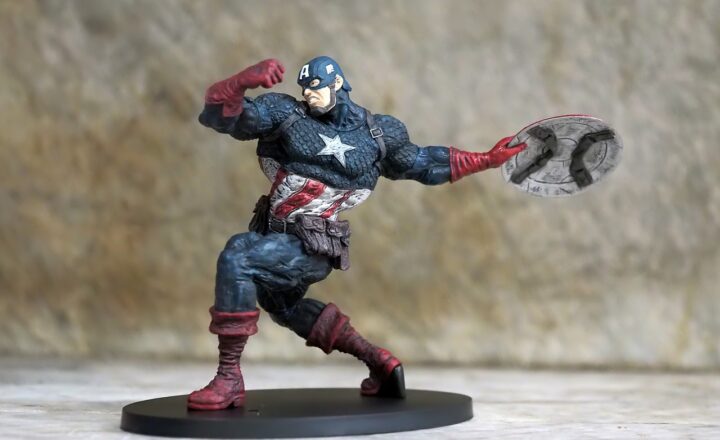
Comic books have been a significant part of popular culture for decades, shaping and reflecting society’s values and controversies. Over the years, they’ve sparked debates, prompted outrage, and sometimes even led to legal battles. This article explores some of the most controversial moments in comic book history, delving into why they created such a stir and their lasting impacts on the medium.
1. The Introduction of Black Characters in Mainstream Comics
The 1960s marked a pivotal moment in comic book history with the introduction of black characters in major storylines. Marvel Comics’ introduction of Black Panther in 1966 and Falcon in 1969 was met with both excitement and backlash. Critics praised the inclusion of black heroes as a step forward, while others resisted the notion of diversity in comics, arguing it disrupted long-held values within superhero lore.
Comic book fans were both thrilled and unsettled. This backlash often manifested in fan letters and community forums where comics were heavily debated. The growth of characters like Storm and Luke Cage signaled a cultural shift in comic book narratives, eventually leading to more diverse representation in comics today.
2. The Death of Gwen Stacy
Gwen Stacy’s death in “The Night Gwen Stacy Died” storyline (The Amazing Spider-Man #121, 1973) is often considered one of the most shocking moments in comic book history. Writing the story, Gerry Conway wanted to explore real consequences for superhero actions and craft a narrative that would resonate deeply with readers. Her death not only altered Peter Parker’s life but also sent shockwaves through the comic book community.
This moment sparked discussions about the treatment of female characters in comics, with many arguing that Gwen’s death was a way to propel Spider-Man’s character arc. The controversy revealed underlying gender dynamics and led creators to re-examine the roles of women in superhero stories, promoting debates about empowerment versus objectification in the genre.
3. The Comics Code Authority
Established in 1954, the Comics Code Authority (CCA) was initially created to regulate the content of comic books, particularly in response to the accusations that comics were contributing to juvenile delinquency. This censorship lasted for decades and led to significant restrictions on content, limiting the exploration of themes like crime, horror, and even romance.
In the 1970s, the CCA faced rising criticisms, leading to creators like Neal Adams and Roy Thomas challenging its authority, resulting in notable comics like “Green Lantern/Green Arrow” that tackled real social issues like drug addiction. The slow dismantling of the CCA in the late ’80s ensured that comics could explore deeper, more complex themes without succumbing to censorship.
4. The Emergence of Mature Content in Comics
As comics began to target adult audiences, works like Frank Miller’s “The Dark Knight Returns” and Alan Moore’s “Watchmen” pushed the boundaries of acceptable content. These stories, filled with graphic violence, complex themes, and moral ambiguity, marked a shift that polarized audiences. While these stories were celebrated for their sophistication, others criticized them for obscuring the original charm of the superhero genre.
Many traditional fans felt alienated as comics began to reflect darker societal issues, including mental illness, societal collapse, and ethical dilemmas. This controversy ignited a battle within the industry about the direction of comic storytelling and whether comics could maintain their youthful innocence while catering to an adult audience.
5. The Death of Superman
In 1992, DC Comics made headlines with the major event titled “The Death of Superman.” The storyline culminated in Superman facing the monstrous Doomsday, leading to his untimely demise. The global media frenzy surrounding his death garnered significant attention, raising questions about the permanence of superhero deaths in comics.
While some praised the move as groundbreaking, others deemed it a publicity stunt, diminishing the weight of superhero storytelling. Fan response was mixed, with both outrage and mourning, ultimately driving home the idea that beloved characters could be put through harrowing transformations but would ultimately return to life or be reimagined.
6. Gender Representation and the Misogyny Debate
The portrayal of women in comic books has faced continuous scrutiny. Characters like Wonder Woman and Catwoman often walked the line between empowerment and objectification. The sexualization of female superheroes in art and writing sparked widespread debates within the community.
In the early 2000s, the release of works that challenged the portrayal of women led to greater awareness. Advocates campaigned for more robust female characters and storylines that reflected their complexities positively. From movements like #WomenInComics to the eventual rise of female-centric narratives like “Ms. Marvel,” the fight against misogyny within the comics industry continues.
7. The Killing Joke and Questions of Morality
Alan Moore’s “The Killing Joke” (1988) is often cited for its controversial depiction of violence against women, particularly against Barbara Gordon, who is shot and sexually assaulted by the Joker. This story challenged the moral underpinnings of comic narratives and opened a debate about violence and feminine victimhood in superhero comics.
Readers expressed concern about whether such portrayals were necessary and whether they could be justified within the plot. The controversy surrounding “The Killing Joke” catalyzed discussions about responsible storytelling and how creators treat characters meant to embody strength in the face of adversity amidst moments of vulnerability.
Conclusion
Comic books have always been a reflection of the society in which they exist. Controversial moments in comic book history have spurred vital discussions about race, gender, morality, and artistic freedom. As the industry continues to evolve, these moments remind us of the importance of inclusivity, transparency, and authentic storytelling. By learning from the past, creators and readers alike can forge a new future for comic books that reflects the lives and experiences of all individuals.
As we explore the world of comics, it’s crucial to engage critically with the narratives being presented, opening up dialogues that encourage diverse representation and thought-provoking storytelling.
By understanding these significant moments, we can appreciate the journey that comic book culture has undergone and how it continues to shape our collective imagination today.







